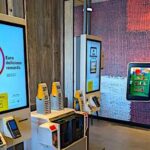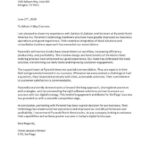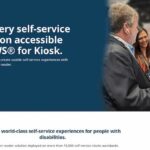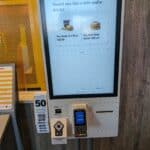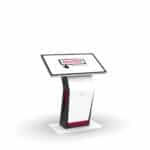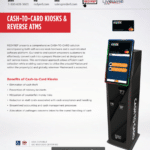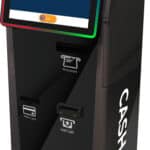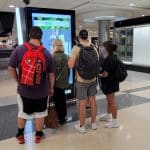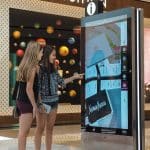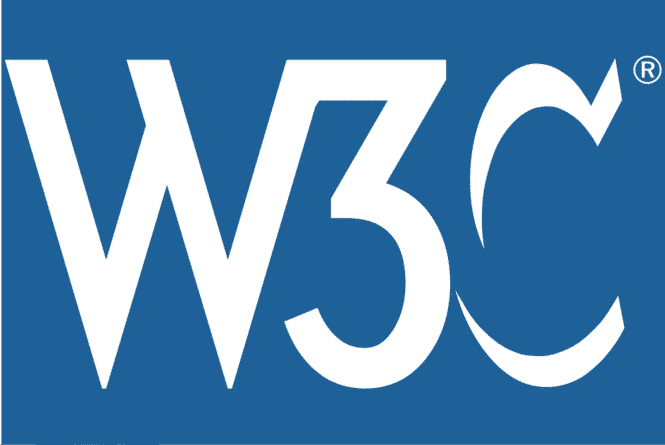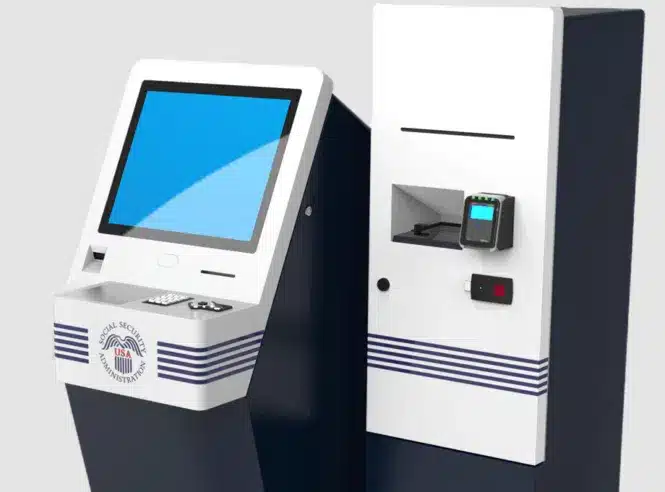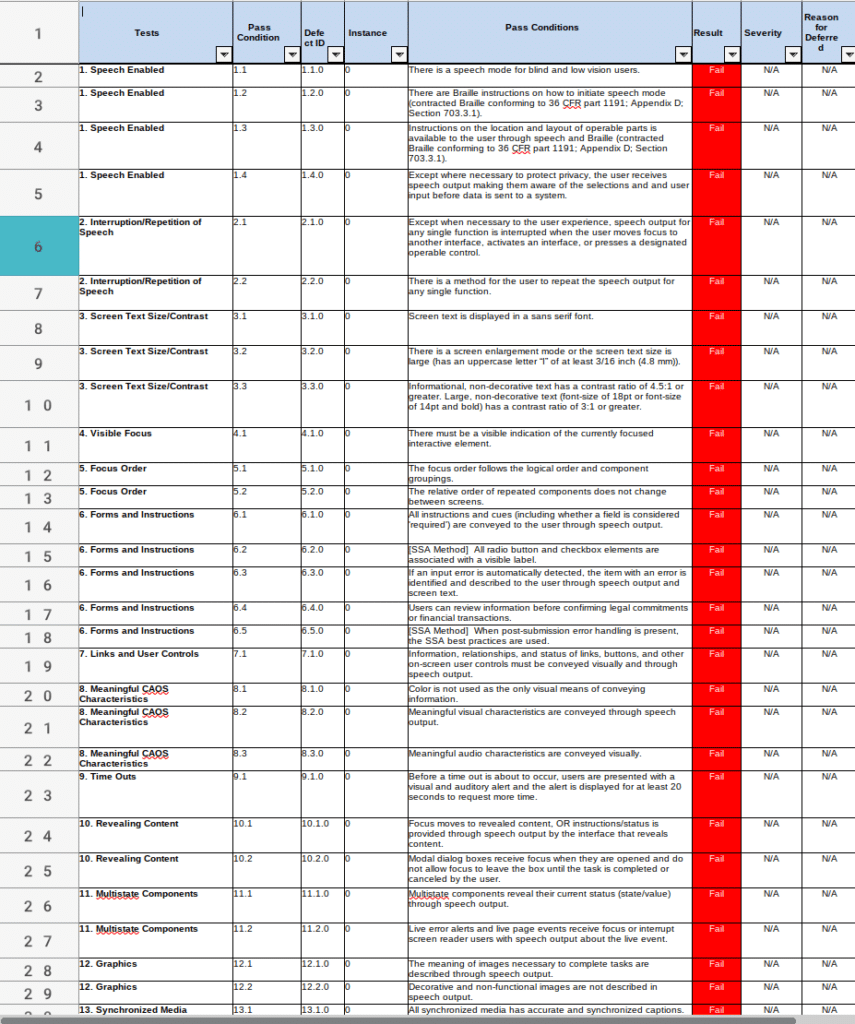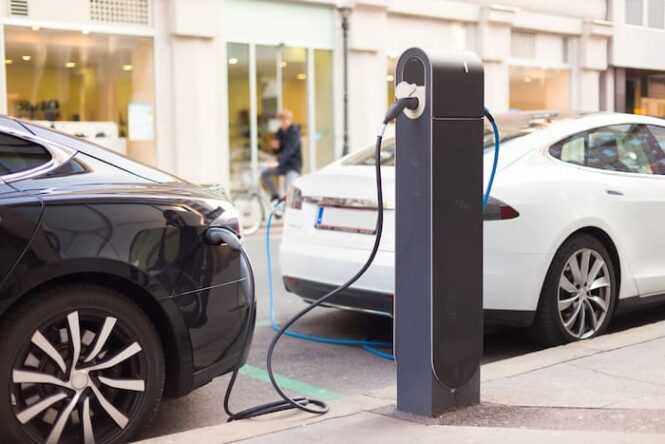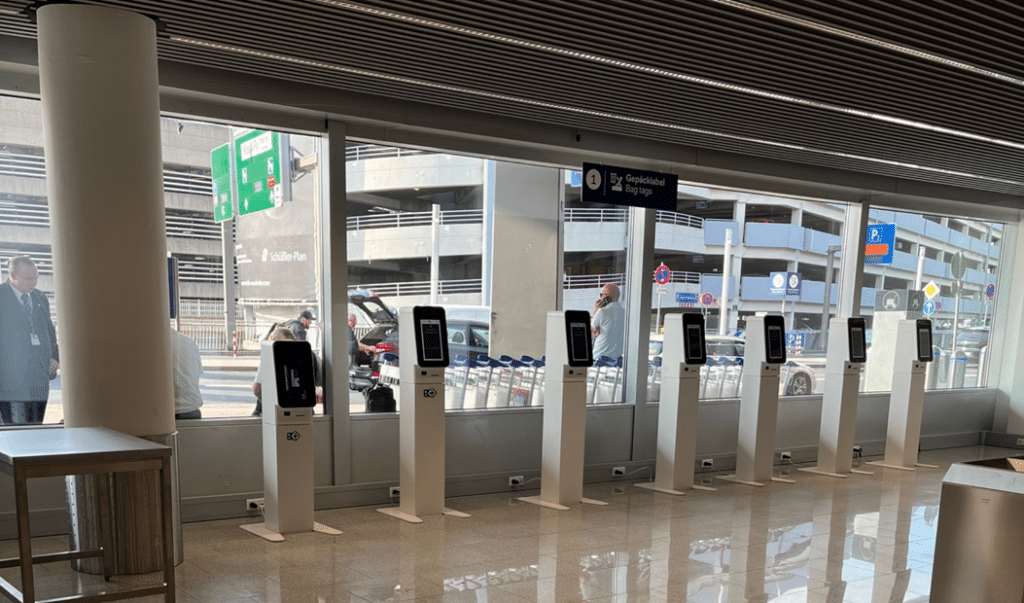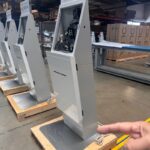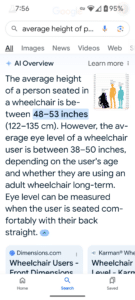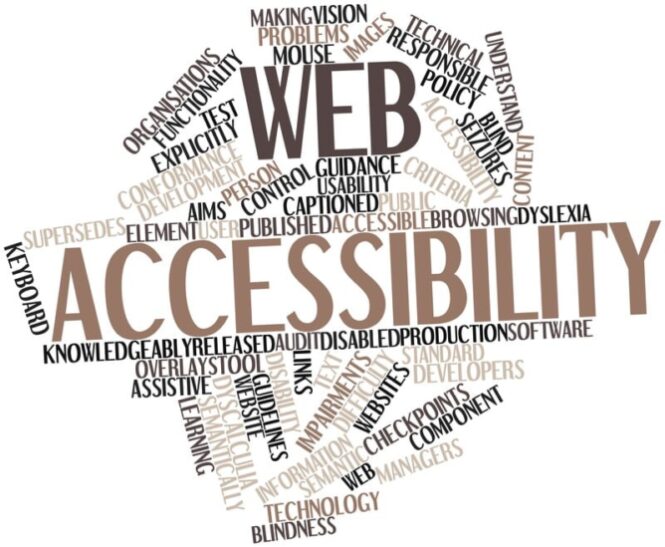
Accessibility Update April 2025 – Web and WCAG
Accessibility Update 2025 — We encourage accessibility. Accessible self service is the ideal for us. If we had one wish, it would be that self-service accessibility for all be treated much like safety. Seat belts and airbags benefit everyone. They are not optional for auto manufacturers. Emissions control is another. I drive a 2006 Acura TL and it would not be allowed on the road in China. From kioskindustry.org
The value of a single aspect detail checklist like below is that we need 20 or 30 other ones like this, covering the different aspects of self-service, and not just a web interface on a desktop computer screen. Most of us use mobiles anyway.
We have our basic checklist, but we would like to expand those items into actions. In the kiosk and digital signage world we have to think about multiple factors
-
- hardware (includes Mobiles)
- software
- Pre-deployment usability using personas.
- installation
- site surveys
- Connectivity (good luck getting decent internet in rural?)
- Ongoing service
- Post deployment surveys of customers for what we got right and what we got wrong
- Application flow (much like proper syntax in sentence structure. e.g. — Accessibility self-service for important is people use can everyone when easy not if.) All the checkboxes checked but good luck making sense.
- When clients do their own software kiosk manufacturers are at their mercy and never see the code fyi*
Insight — with the onset of “AI Fever” there are already examples of transactional processes being needlessly confused and diverted due to AI.
Note: current website project if interested — The City of Dallas (“the City”) invites information from established vendors or providers specializing in State and Local government technology services, specifically digital agencies/companies experienced with redesign, redevelopment, maintenance and management of external / public facing websites. The project scope includes user research to review the effectiveness of current websites (both the homepage and department specific pages), development of revised architecture, design and templates; content migration; and recommendations for new service-based functionality. The City is interested in responses from those with proven experience in the website design, redesign, migration, upgrade and ongoing maintenance sector. 01- Specifications- Website Redesign and Maintenance RFI Specs Final (002)
Examples of Good WCAG Testing
Features used to enhance accessibility:
- Focus on using semantic HTML for better page performance, more enhanced SEO rankings, better mobile optimizations, built-in functionality, and screen reader compatibility.
- Information, structure, and relationships are conveyed programmatically in the product.
- Using ARIA where HTML elements do not provide enough detail or information.
- Textual equivalents are provided for all non-textual elements.
- Using a mechanism to bypass blocks of content that are repeated on multiple web pages.
- All forms and form elements are designed for accessibility.
- Labels or instructions are provided in the product when content requires user input.
- Color recognition is not required to convey information.
- The visual presentation of all text and images of text in the product have a contrast ratio that meets the minimum requirements.
- Focusable components in the product receive focus in an order that preserves meaning and operability.
- Data tables are clearly identified for logical use.
- Style sheets are not required to view content.
- No multimedia elements are used.
- Animation is not utilized in applications.
Ongoing accessibility initiatives include:
- Review and application of updated guidelines as they are released.
- Continuing assessment of application software and development processes as they relate to future guidelines.
- Ongoing review, documentation and remediation of all end user applications using internal audits, development and testing processes.
- Evaluate the applications with NVDA, Deque Axe Accessibility Chrome extension, WebAIM WAVE Tool, WebAIM Color Contrast Checker, Windows accessibility settings, manual keyboard checks, third party (Deque, Level Access) automated and end user testing.
- Engage clients, students and users if issues are reported. We ask them to describe and or document the issue(s) found, demonstrate with assistive technology and test the results of our remediation.
- Work with third party providers to review, document, remediate issues and provide detailed VPAT documentation based on WCAG 2.1 AA (and continuing to evolve based on newer versions of WCAG).
About WCAG
The most recently released version of the Web Content Accessibility Guidelines (WCAG) is WCAG 2.2. It was officially published as a W3C Recommendation on October 5, 2023, with an update released on December 12, 2024267. WCAG 2.2 adds nine new success criteria to those in WCAG 2.1 and removes one obsolete criterion (4.1.1 Parsing), aiming to improve accessibility for users with cognitive disabilities, low vision, and limited fine motor skills678.
WCAG 2.2 is now the recommended standard for web accessibility, but it does not deprecate or supersede WCAG 2.1 or 2.0. All three versions remain valid, though the W3C encourages organizations to use the most recent version—WCAG 2.2—for the greatest future applicability127.
A future major version, WCAG 3.0, is still under development and has not been released. It is expected to become a W3C standard in several years458.
Breakdown of Age Generations in the U.S. (2023-2025)
Note: that we have excluded the Jones Generation (I am in that one).
Here is a summary of the primary generational cohorts in the United States, their typical birth years, current age ranges, and their estimated share of the U.S. population:
| Generation | Birth Years | Age in 2025 | % of U.S. Population (2023) |
|---|---|---|---|
| Silent Generation | 1928–1945 | 80–97 | Not specified |
| Baby Boomers | 1946–1964 | 61–79 | 73 million |
| Generation X | 1965–1980 | 45–60 | 65 million |
| Millennials | 1981–1996 | 29–44 | 73 million |
| Generation Z | 1997–2012 | 13–28 | 69 million |
| Generation Alpha | ~2013–2024 | 1–12 | 38 million |
What about Disability Ratios?
- Baby Boomers — 24% (65–74), 46% (75+)
- Gen X — 12% (35–64); up to 36% self-report
- Millenials — 8% (<35); up to 33% self-report
- Gen Z — 8% (<35); 42% mental health dx
- 37 Million disabled or impaired total?
- 340 Million total population in US
- Retail shoppers = 135 million
- Online = 274 million
- How many consumers prefer using self-service? — 77% — 80% express interest.
- Total self-service user base? 110 Million
- percentage of those with some form of disability? 33%
Key Details:
-
Millennials (born 1981–1996, ages 29–44 in 2025) are the largest generation group, making up about 21.71% of the U.S. population in 202342.
-
Generation Z (born 1997–2012, ages 13–28 in 2025) accounts for around 20.69% of the population47.
-
Baby Boomers (born 1946–1964, ages 61–79 in 2025) are the second-largest group, though their numbers are shrinking as the population ages257.
-
Generation Alpha (born early 2010s–2024, ages 1–12 in 2025) is the newest named generation and is said to make up a significant share of the population, with some estimates suggesting around 42.75%, though this figure may include overlap with younger Gen Z27.
-
Generation X (born 1965–1980, ages 45–60 in 2025) is smaller than Boomers and Millennials but will surpass Boomers in population by 2028 as the latter cohort ages57.
Note: The exact percentage for some generations (Silent, Gen X) is not specified in the latest available data, but Millennials and Gen Z together make up over 42% of the population as of 20234.
Major Disabilities and Impairments in the U.S. Population
More than 1 in 4 adults in the United States—over 70 million people—report having some type of disability, according to the latest CDC data from 2022214. The most common types of disabilities and their prevalence among U.S. adults are as follows:
| Disability Type | % of U.S. Adults | Estimated Number of Adults (2022) |
|---|---|---|
| Any disability | 28.7% | 70+ million214 |
| Cognitive disability | 13.9% | ~34 million145 |
| Mobility disability | 12.2% | ~30 million145 |
| Independent living | 7.7% | ~19 million15 |
| Hearing disability | 6.2% | ~15 million135 |
| Vision disability | 5.5% | ~13 million135 |
| Self-care disability | 3.6% | ~9 million1 |
Definitions and Examples
-
Cognitive disability: Serious difficulty concentrating, remembering, or making decisions. Includes learning disabilities, intellectual disabilities, autism, ADHD, and memory loss145.
-
Mobility disability: Serious difficulty walking or climbing stairs. Includes conditions like arthritis, muscular dystrophy, multiple sclerosis, and spinal injuries15.
-
Independent living disability: Difficulty doing errands alone, such as visiting a doctor or shopping15.
-
Hearing disability: Deafness or serious difficulty hearing135.
-
Vision disability: Blindness or serious difficulty seeing even when wearing glasses135.
-
Self-care disability: Difficulty dressing or bathing independently1.
Additional Insights
-
Disability prevalence increases with age, affecting 16% of adults aged 18–44, 29% of those aged 45–64, and about 50% of individuals over 654.
-
Rates are higher among Black (31%) and Hispanic (30%) adults compared to white adults (24%)4.
-
Many adults experience more than one type of disability3.
These figures underscore the significant impact of disability across U.S. society and highlight the importance of accessibility and support for individuals with a wide range of impairments.
How many buying cycles for a Baby Boomer compared to Millenial?
Yes, Baby Boomers have fewer years left to buy cars compared to Millennials.
-
Life Expectancy: Most Baby Boomers (born 1946–1964) are currently between 61 and 79 years old. The average life expectancy for Boomers is around 79–88 years, depending on gender and health1356. This means the oldest Boomers may have less than a decade, and the youngest up to 20–25 years, of car-buying years left.
-
Current Car-Buying Patterns: Despite their age, Boomers are still very active car buyers. In fact, the 55-to-64 age group (older Boomers) is currently the most likely to buy a new car, and even those over 75 buy cars at higher rates than some younger groups24.
-
Generational Shift: As Boomers age into their 80s, car buying will naturally decline due to reduced mobility, health issues, and eventually, the cessation of driving1356. Millennials, being younger, have many more years ahead for car purchases.
In summary: Boomers are still strong contributors to car sales, but their remaining years for buying cars are limited compared to Millennials, who have several decades of car-buying ahead of them1256.
In Practice:
-
Over a typical adult lifespan, both Baby Boomers and Millennials are likely to purchase between 6 and 8 vehicles (new and used), assuming average car replacement every 7–10 years over a 50–60 year driving lifetime (from age 18 to 75+).
-
Millennials may buy cars at a slightly slower rate early in adulthood, but this gap closes as they age and their life circumstances converge with those of Boomers38
Useful Accessible Self Service Links
- Accessibility Testing Tools – Simulating Disabilities by Cambridge
- WCAG 2.2 Guidelines – Kiosk Manufacturer Association
- WCAG 2.2 Guidelines – What’s New – Kiosk Manufacturer Association
- Making Kiosks Accessible – Simply use a Screen Reader
- understanding organizational approaches to accessibility iaap …
- Using A Mobile Phone As Accessible Interface Smart City Kiosk
- ADA Canada – CSA Standards for Interactive Devices Updated
- Guidelines Kiosk ADA Accessibility – August 2020 KMA Framework
- Airport Kiosks – Does ADA Discriminate against Tall People?



